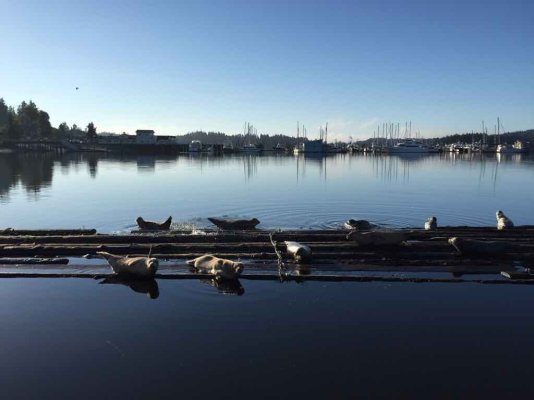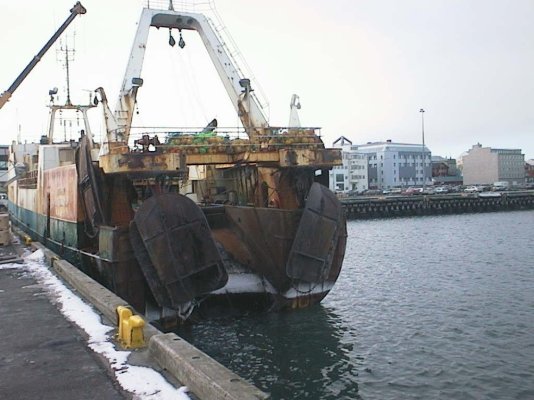There have been a few recent threads about demographics (with a particular emphasis on GB owners). And every now and then someone pops up and asks where would be a good place in the PNW to home port a trawler.
We're currently in the reciprocal moorage at Poulsbo Yacht Club, which is a little different from other clubs in that the members own the slips and can sell them on the market so it's possible for someone with no seniority to purchase a large slip.
But it was the boats here in this (guessing) 120 slip marina that got my attention - the majority of them trawlers:
8 - Taiwanese Tri-cabin Trawler
7 - Bayliner Motoryacht
6 - Grand Banks (32, 36, 36, 42, 46, 52)
8 - Tollycraft
4 - Taiwanese Motoryacht
4 - Ocean Alexander
3 - Selene
3 - Uniflite
2 - Nordic Tugs
2 - Wood Trawler
1 - Nordhavn
1 - American Tug
1 - Camano
1 - Acapulco Trawler
1 - Chris Craft (Connie?)
1 - Sea Horse
1 - Fleming
1 - American Marine Trawler
1 - Kady Krogen 48
1 - Roughwater
1 - Defever 49
1 - Custom lobster yacht
We're currently in the reciprocal moorage at Poulsbo Yacht Club, which is a little different from other clubs in that the members own the slips and can sell them on the market so it's possible for someone with no seniority to purchase a large slip.
But it was the boats here in this (guessing) 120 slip marina that got my attention - the majority of them trawlers:
8 - Taiwanese Tri-cabin Trawler
7 - Bayliner Motoryacht
6 - Grand Banks (32, 36, 36, 42, 46, 52)
8 - Tollycraft
4 - Taiwanese Motoryacht
4 - Ocean Alexander
3 - Selene
3 - Uniflite
2 - Nordic Tugs
2 - Wood Trawler
1 - Nordhavn
1 - American Tug
1 - Camano
1 - Acapulco Trawler
1 - Chris Craft (Connie?)
1 - Sea Horse
1 - Fleming
1 - American Marine Trawler
1 - Kady Krogen 48
1 - Roughwater
1 - Defever 49
1 - Custom lobster yacht



